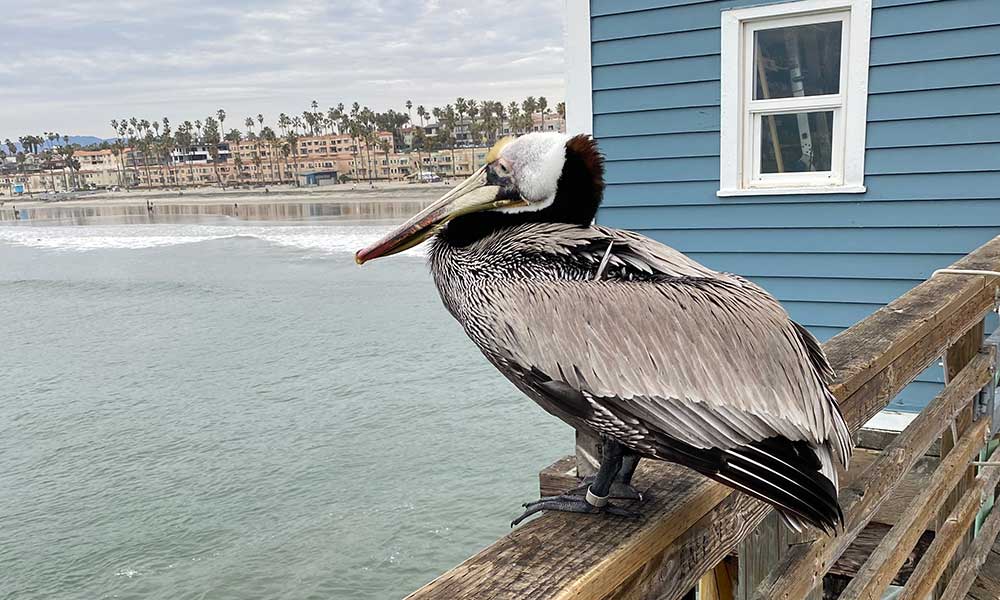Pelicans are an interesting species. On the ground, they’re awkward and even unattractive to some. But when they take to the sky, you’d be hard-pressed to find a more graceful bird.
What do you know about pelicans? Do you know what they eat? Where they live? And why have you never seen a baby pelican in the same way you’ve seen baby ducks or geese?
Are you ready to learn more about pelicans? Here are facts about pelicans we doubt you knew before today.
Pelican FAQs
Here 7 facts about pelicans you didn’t even know you needed to know.
What Do Pelicans Eat?
You may have already known that pelicans mainly feast on fish.
But did you know that one pelican can eat up to four pounds of fish every day?
The type of fish a pelican will eat depends upon where the bird lives.
Pacific coast birds will enjoy anchovy appetizers and sardine suppers. Pelicans in other parts of the country will eat herring, pigfish, minnows, and other little morsels.
Notable about the pelican is he can see his underwater prey from up to 70 feet in the air.
This makes them one of the best avian hunters—a good thing considering the pelican’s appetite.
Where Do Pelicans Live?
Pelicans live on every continent on the planet, with the exception of Antarctica.
They do prefer warmer air and water, so you’re more likely to find a pelican on the Amazon River than you are to find one in Maine.
Pelicans nest in trees and on cliffs. Grass, sticks, and leaves are primarily used to build nests, but the occasional bird will scratch a nest into the sand on a beach.
The birds lay two or three eggs in the nest, and those eggs are then cared for alternately by the male and the female.
What is a Group of Pelicans Called?
Most people consider any large group of birds a “flock.”
However, that’s rarely accurate. For instance, you may see a mob of emus or a parliament of owls.
Maybe you’ve come across a kettle of falcons.
A group of mixed species birds is called a flock, sure. But a group of pelicans can be called a squadron, a pod, or a scoop.
Do Pelicans Migrate?
Most pelicans migrate. These birds prefer warmer weather, so as the winter temperatures begin to set in, pelicans will travel south if in the northern hemisphere or north if in the southern hemisphere.
While most types of pelicans will travel for the winter, there are a few who like to stay put.
In Texas and Mexico, for example, pelicans will establish permanent residency.
The climate is such that they just have no reason to move.
How Long Do Pelicans Live?
The average lifespan of a pelican is between 15 and 25 years.
However, birds that have been tagged have been “rediscovered” in the wild, still alive and well, after 31 years.
Pelicans do not mate for life, but they’re monogamous during a mating season.
Interestingly enough, a pair of pelicans is only a “couple” at the nest. When elsewhere, the birds are completely independent of one another.
How Big are Pelicans?
Pelicans are notorious for being plump birds.
Perhaps that’s one of the reasons they don’t display much grace when they’re on land.
The average length of a pelican from tail to beak can be up to 70 inches.
Of course, a large portion of that length is the beak itself.
A full-grown pelican can be as light as 9 pounds or as heavy as 30.
And the wingspan of an adult pelican can be as wide as 120 inches. Yes, that’s ten feet!
Are Pelicans Dangerous?
Pelicans are fairly easygoing birds. You don’t hear too many news stories about “when pelicans attack,” which is fortunate considering the size of the birds.
As with any animal, however, a pelican will protect his territory. In other words, if you mess with a pelican, he’s going to mess right back.
For the best pelican-watching experience, watch from a distance.
Don’t bother the pelicans and they won’t likely bother you.
Brown Pelican and Other Types of Pelicans
Fossils of the oldest known pelicans date back 30 million years.
It can be assumed that, over the course of all those years, different species existed.
Today, however, there are eight known species of pelican:
- American white
- Brown
- Peruvian
- Rosy
- Australian
- Pink-backed
- Dalmatian
- Spot-billed
Why Do You Never See Baby Pelicans?
Have you ever wondered what a baby pelican looks like?
Why do we never see baby pelicans in the wild?
The simple answer is that nobody knows.
We just don’t understand enough about the breeding season of this bird to answer that question.
Until researchers uncover more of the mysteries of the pelican, Google images will have to suffice for most of us.
Summary: All About Brown Pelicans and Other Pelicans
The pelican is a widespread bird, with species living on almost every continent on the planet.
Known for their huge appetites and grace in the air, the pelican has unique habits and is a truly interesting animal.
They’re still much we don’t know about each species of pelican, but scientists are discovering more and more as time goes on.







